© 2024 - In memory of Francesco Bissolotti in the 5th anniversary of his death
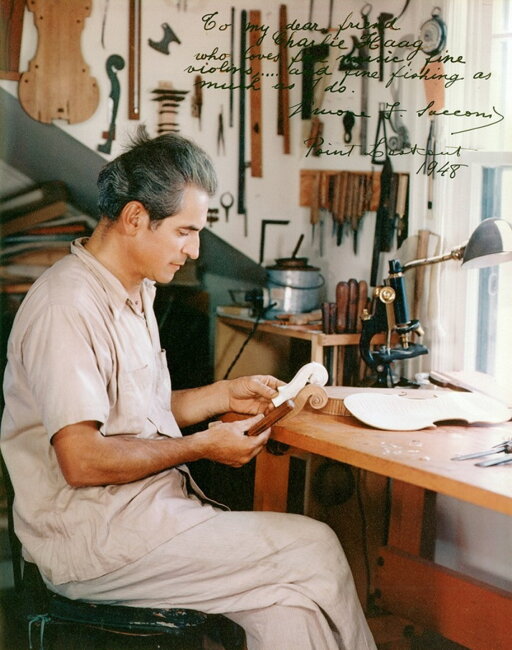
Simone Fernando
Sacconi
The Man and the Maestro
as Seen by the Greatest Violinmakers, Experts,
and Musicians Who Knew Him
From the book:
«From Violinmaking to Music:
The Life and Works of Simone Fernando Sacconi»
Cremona: Aclap, 1985
In the image above:
The Maestro Sacconi in his workshop at Point Lookout, Long Island, NY, 1948
Francesco Bissolotti
and Simone Fernando Sacconi
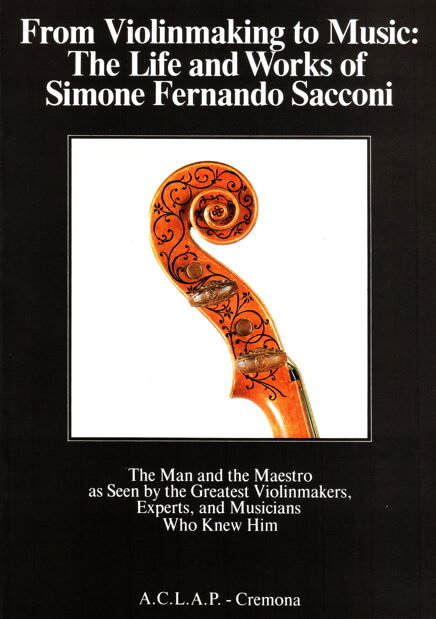
On the fifth anniversary of the death of the master luthier Francesco Bissolotti of Cremona (who passed away on 31 January 2019), we recall in loving memory the testimony he gave about the great luthier, restorer and expert Simone Fernando Sacconi for the international publication «From Violinmaking to Music: The Life and Works of Simone Fernando Sacconi», published by Aclap of Cremona in 1985 and presented on 17 December of the same year to the Library of Congress in Washington, DC.
The testimony of Maestro Bissolotti was taken up in the book «Simone Fernando Sacconi. Luthier, restorer and expert among the greatest of the twentieth century» by luthiers Wanna Zambelli and Marco Vinicio Bissolotti, presented on 25 June 2023 in the «Giovanni Arvedi» Auditorium of the Violin Museum, as part of the celebrations for the 50th anniversary of Sacconi’s death (1973–2023).
In order to honour the memory of the Italian-American Maestro, it seemed appropriate to propose in this new book dedicated to him, together with further contributions, some texts, documents and photographs taken from the first volume, conceived and promoted by the master luthiers Francesco Bissolotti and Wanna Zambelli, which bring together the testimonies of many people around the world – great luthiers, restorers, experts, famous musicians, prestigious collectors and scholars – who knew or worked with Sacconi. The importance and historical value of the individual contributions have led to strict respect for the integrity of the original texts, in their variety of styles, intonation and forms of expression. This has helped safeguard the spontaneity and richness of feeling of each contributor: qualities that made that work a precious tribute by the greats of yesterday and today to the great Maestro and his art.
In the photo above:
► Cover of the book «From Violinmaking to Music: The Life and Works of Simone Fernando Sacconi» (English version)
In the photo in the centre, from the left:
► The luthier Francesco Bissolotti, Simone Fernando Sacconi and the luthier Giorgio Cè.
Cremona, May 1968 Photo: © Bissolotti Archive, Cremona
In the photo below:
► Cover of the book «Simone Fernando Sacconi. Luthier, restorer and expert among the greatest of the twentieth century»
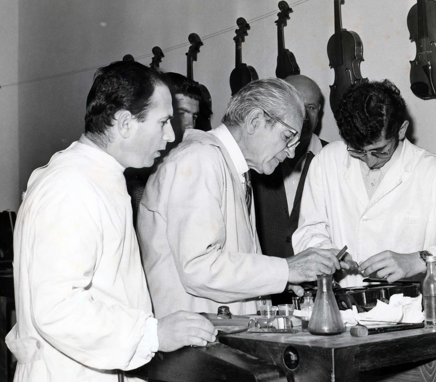

Francesco Bissolotti,
father and teacher
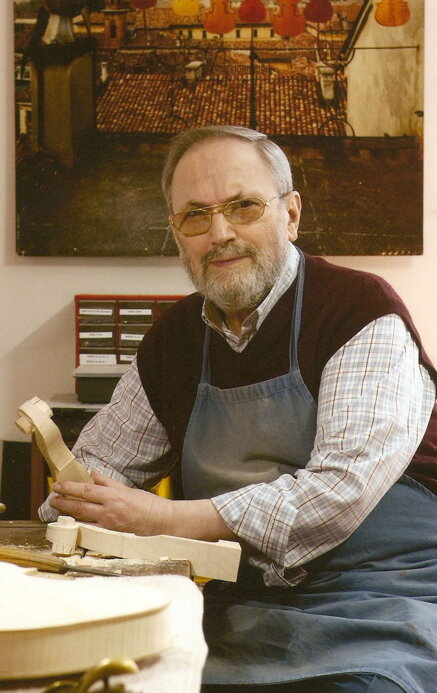
by Marco Vinicio Bissolotti
Presenting the artistic and professional work of one’s father, five years after his death, is an arduous and complex task. Remaining objective in recounting the stories without being influenced by emotions and memories is difficult if not impossible, and lapsing into partisan judgements or some form of hagiography, I think is profoundly human. I have attempted to be as objective and honest as possible, without being overly influenced by the affection and admiration that my brothers and I have always felt towards him. That affection and admiration have never lessened, even when there was bitter conflict within our family. Violin making has been the glue that has always kept us united, allowing us to get through the difficult and complicated times of our lives. (...)
In the photos, from above:
► The master luthier Francesco Bissolotti
Photo © 2017 Bissolotti Archive, Cremona
► The master luthier Francesco Bissolotti (center) and (from left) the sons luthiers Vincenzo, Tiziano, Marco Vinicio and Maurizio Photo © 1981 Bissolotti Archive, Cremona
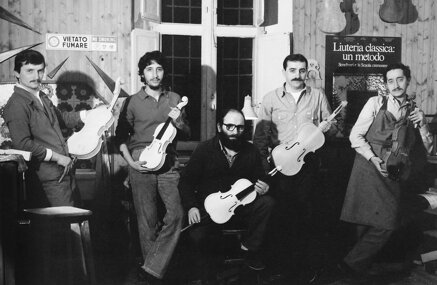
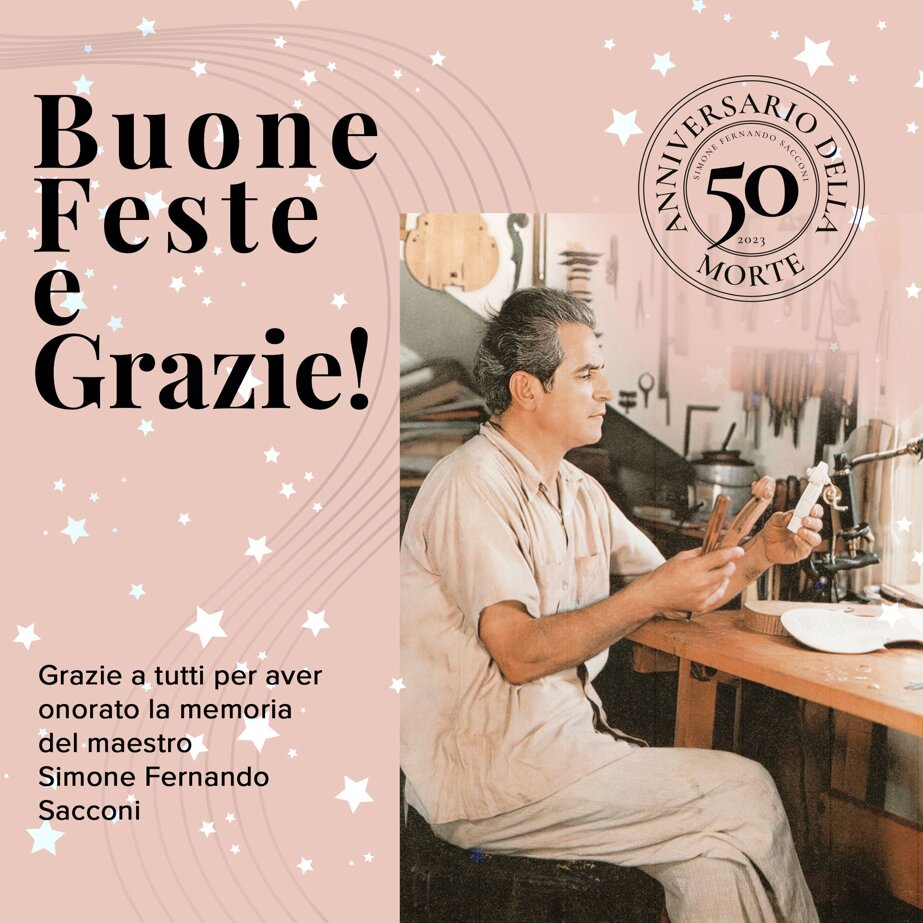
Happy Holidays!
And thank you all for sharing thoughts, memories and emotions in 2023,
during which we celebrated the 50th anniversary of the death of the great luthier,
restorer and expert Simone Fernando Sacconi
The next appointment is scheduled for May 2025,
when we will commemorate, with a concert,
a new book and other cultural initiatives,
the 130th anniversary of the Maestro's birth (Rome, 30 May 1895)
Info and updates will be published on this official website:
www.simonefernandosacconi.it


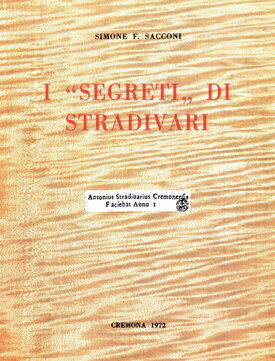
Simone Fernando Sacconi
Simone Fernando Sacconi
The Maestro Sacconi intent on roughing the outline of the back of an instrument.
«Sacconi was an important figure, because he managed to stimulate the development of contemporary violinmaking, to which he contributed with most beautiful examples. He was also able to transmit his love for the greats of the past, and was successful in teaching so many young violinists that Guarnerius, Stradivarius, Bergonzi, Amati, and all the others should be admired and loved, not only as great violinmakers, but also as examples of human genius, as the products of a great civilization. (...)
For Sacconi, violinmaking was simply a form of life.» [Henryk Szeryng. Monaco, June 24, 1985]
«I 'segreti' di Stradivari». Libreria del Convegno Editrice. Cremona, 1972.
«I 'segreti' di Stradivari» was Fernando Sacconi's final gift to his profession, a detailed account of how Stradivari made his unique instruments, and it has become almost a bible. The method described in it is, I believe, certainly Stradivari's and almost certainly the best, but Sacconi would have been upset at those who follow it blindly and assume that their result will inevitably be good. He achieved what he did and became the great person that he was by questioning everything, following his own instincts and making up his own mind, and always looking for a better way of doing things, and a better result. Antonio Stradivari himself can hardly have been very different.» [Charles Beare. London, July 4, 1985]
Simone Fernando Sacconi
Copy of the inlaid violin by Antonio Stradivari «Hellier» of 1679, made by the Maestro in 1941. The instrument, owned by the Municipality of Cremona, is kept in the prestigious Violin Museum of Cremona, visited every year by thousands of people from all over the world. © Photo Archivio Bissolotti, Cremona.
In the photo below: Cremona, Museo del Violino.
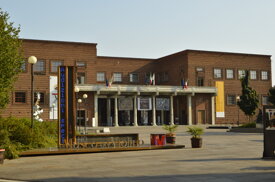

In memory of Simone Fernando Sacconi
in the 50th Anniversary of his death
June 26, 2023 is the 50th Anniversary of the death of the violin-maker, restorer and expert Simone Fernando Sacconi (Point Lookout, Long Island, June 26, 1973), one of the most influential exponents of 20th century violin-making.
In view of this important event and to honour the Maestro's memory, it seemed appropriate to propose on this website dedicated to him some extracts of the book «From Violinmaking to Music: The Life and Works of Simone Fernando Sacconi», printed by Aclap in 1985 and presented on 17 December of the same year at the Library of Congress in Washington, DC.
With this international publication, conceived and promoted by masters violin-makers Francesco Bissolotti and Wanna Zambelli of Cremona, we wanted to collect documents and testimonies of many who in the world – great violin-makers, restorers and experts, famous musicians, collectors and scholars – have known or worked with the Maestro Sacconi. The importance and historical value of the individual testimonies have led to strictly respect the integrity of the original texts, in their multiplicity and variety of styles, intonations and forms of expression.
In this way, the spontaneity and the richness of everyone’s feeling have been safeguarded, qualities that have made this work, first of all, a precious homage of the greats of yesterday and today to the great Maestro and his art.
*********
(...) It was this extraordinary affection for instruments, this compassion for the performers whom he befriended, that made Fernando Sacconi a unique individual and regarded by every professional the world over as the number one man to whom one could go for final judgment. He created the standard by which all others were judged, and there are great numbers of luthiers and violinists who owe their careers and their understanding to his generosity. And thus his memory continues within all of us.
[Isaac Stern. New York, February 19, 1984]
There is no doubt that Simone Fernando Sacconi was a very great instrument maker, and any restoration performed by him was in itself a masterpiece. His sensitivity and admiration for the magnificent instruments which passed through his hands was marked by such reverence. How he studied and measured the great Strads, Amatis, and Guarneris! It became a «love affair».
(...) The string players of today owe Simone F. Sacconi an enormous debt of gratitude.
[Leonard Rose. New York, January 19, 1984]
(...) Fernando Sacconi's inquisitive mind explored everything to do with violins and bows, and he became renowned both as a maker of new instruments, and as a connoisseur, restorer and adjuster of the finest old ones. Many of his closest friends and most valued customers have also passed away, but from the accounts of the musicians who have kindly contributed to this book comes a picture of a liutaio devoted to them and uniquely qualified to serve their needs.
From the violin makers the reader will sense not only the unique respect in which Maestro Sacconi was held, but also something of his greatness as a teacher, and of his warmhearted generosity with the knowledge that he had so painstakingly acquired.
[Charles Beare. London, July 4, 1985]
I first met Sacconi in 1937 in Cremona and later that same year in New York, where he directed the workshop of Emil Herrmann. At that time I showed him an unvarnished violin for his critique and advice and from then on visited him regularly until I was employed by Emil Herrmann. From that point on, working full time with Sacconi, I had the unusual opportunity to work under his guidance until 1947, when I moved to Los Angeles and established my own business. I will not dwell on anecdotes, but will state what I believe are the most important and admirable contributions which this renaissance man made to our art and craft.
First of all he had a marvelous skill in all phases of wood carving, classing him among the best ever. In addition he could draw and retouch like a painter and above all, he understood the great classic Italian makers of the 16th, 17th and 18th centuries and had developed – through his almost fanatical dedication and industry – a great overall knowledge and refined taste.
With all these wonderfully developed gifts came an artistic fantasy which enabled him to invent new and sophisticated repair techniques which he taught to those students who really worked with him. He was a true pioneer in this field and the consequence of his teaching activity was that he raised the level of violin making and repairing in the United States to such a degree that it is second to none today. His associates have carried on his work here as well as in Europe.
As far as research is concerned, nobody before Sacconi matched the zeal with which he studied the work of the classic Italian makers. The very intimate study of about two-thirds of Stradivari's work enabled him to publish his very valuable work «I ‘Segreti’ di Stradivari». He also became very interested in the study of materials used by the classic makers and his findings in regard to the purfling materials used by different makers and in different schools were faithfully catalogued and added to by Dario D'Attili, who was undoubtedly the most devoted pupil, assistant and longest co-worker (35 years) of Sacconi.
I have been asked in what way Sacconi influenced my work. The answer is “in every way”. He helped me to understand and appreciate the great classic Italian tradition.
[Hans Weisshaar. Los Angeles, March 21, 1984]
Sacconi was an oracle for us violinists. Whenever we got together and asked each other about a violin – what it was, or wasn't – the first question was, “Has Sacconi seen it? What did he say about it?” He always had the last word – it was the gospel, and not just for us, but for all his colleagues, as well, This is even more important, because he had some extraordinary colleagues, but all of them agreed that Sacconi had the last word – especially when it had to do with Stradivarius. Thus he was held in immense respect – really enormous; both among my colleagues and among his, he was a sort of myth. Sacconi was a myth, and that's how I want to remember him... as a great guiding light, an essential point of reference for musicians and violinmakers, alike – a great, great expert, and a really superior man of extraordinary humanity.
[Salvatore Accardo. Cremona, October 7, 1983]
My father and I discovered Sacconi through his work. It was in the 1930's that Zoltan Szekely, a Hungarian violinist living in Holland, came to show us the double Sacconi had made for him of his Stradivarius. I say «double», because «copy» or «imitation» would be too ordinary a way of describing this beautiful violin, which didn't just remind us visually of Stradivarius, but also bore something of his spirit in its craftsmanship. Indeed, some features of his work were clarified by it.
We were both enthusiastic, but I could not have foreseen that only a few years later my bench would be next to Sacconi's.
The great expert Emil Herrmann, established both in Berlin and in New York in those days before the war, had discovered Sacconi and done everything in his power to get him to come first for a brief stage in his atelier in Berlin, and then to work for him in New York. Emil Herrmann needed an assistant for that workshop, and I was extremely proud to be appointed to the position after my training in Mittenwald and Mirecourt, and with Charles Enel in Paris.
Those of that era will recall the «coquettish» little house on 57th Street, the width of one room and with only three stories, plus an attic. Here Emil Herrmann reigned, and every day there was an intense exchange of experiences. On one hand, Herrmann gave Sacconi the opportunity to familiarize himself with a great number of Stradivarius's instruments; and on the other, Sacconi pleased Herrmann by doing such conscientious, exact work in restoration that no one else at the time could match it. This cooperation soon made an expert of Sacconi and gave Herrmann the possibility of offering for sale perfectly restored Stradivariuses. As a young man of twenty-one, I was given the opportunity of following all this. The beautiful thing was the way in which both of them passed on their knowledge and discoveries so generously. In those years Sacconi found out that Stradivarius cut his f-holes from the inside, out, and also what different materials the various makers used for the purfling. In short, it was a period in which our horizons were broadened daily by Sacconi's findings. His knowledge grew so that he was soon to be described as being almost Stradivarius, himself. (...)
[Guillaume Max Möller. Huizen, July 10, 1983]
Fernando Sacconi was an artisan who through incessant labor brought his art to that high degree of perfection that only true passion for the profession enables one to obtain. Faithful, modest in spite of his reputation and erudition, and with Latin sensitivity, one could say of him along with [William, e.n.] Shakespeare:
«The elements were so mixed in him, that nature might stand up and say to all of the world, 'This was a man!'»
[Pierre Vidoudez. Geneva, July 1, 1983]
Sacconi was an important figure, because he managed to stimulate the development of contemporary violinmaking, to which he contributed with most beautiful examples. He was also able to transmit his love for the greats of the past, and was successful in teaching so many young violinists that Guarnerius, Stradivarius, Bergonzi, Amati, and all the others should be admired and loved, not only as great violinmakers, but also as examples of human genius, as the products of a great civilization. We know that one must be an artist in order to be a violinmaker, and it is necessary to be a man of science, of wisdom, and of philosophy, as well. We are aware of the fact that violins cannot be constructed solely with the application of the laws of physical acoustics, that the empirical aspect has its importance; rules exist and must be respected, naturally, but the exceptions and variables are so numerous. In this sense, and on this subject, Fernando Sacconi succeded in what I would define an apostolic mission: he developed a sense for tone quality and for its capacity to reach the greatest distances; he encouraged everyone to search for big, rich sonority, but he was always against forcing, which naturally causes the violin to emit sounds that are lacking in clarity. We were very much in agreement on this point, because both he and I believe that the volume of sound increases with the beauty of the tone quality, and not just with force, with pressure on the bow.
I believe that the contribution Simone Fernando Sacconi made to the philosophy of the violin was most important, and in innumerable cases he demonstrated that it is possible to have respect for tradition, and at the same time have the ambition to search for new ways, new possibilities.
In order to do things of importance, man in general, the artist, the man of science, the poet, the painter, the sculptor, need to concentrate, to be able to isolate themselves during the preparation of a compelling piece of work. Sacconi went to Long Island near New York City, very close to the ocean and to the beautiful Jones Beach, and when be felt the need for inspiration, instead of staying in his atelier be went for a walk. For me, even taking a walk by oneself bas a most important function in the life of the artist, because if one walks in the vicinity of a masterpiece or in the midst of natural beauty, the moment of inspiration suddenly arrives, even though one may not be conscious of the miracle. In this, too, I find part of the affinity that bound me to Sacconi: the search for beauty, for Nature, for concentrated thought.
Simone Fernando Sacconi's most fundamental contribution to the fields of music and violinmaking was that of having served as a sort of bridge between Cremona and all the modem violinmakers. He did not say that the Cremonese masters should be copied – that would not even be possible – but he firmly believed that one must profit from the wonderful experience of the past, search for the possibilities of the future, and in the present, mix elements of both.
For Sacconi, violinmaking was simply a form of life.
[Henryk Szeryng. Monaco, June 24, 1985]
I would do Sacconi an injustice if I didn't mention the great esteem and highest consideration that everyone in musical circles had for him. They all knew him, from Menuhin to Stern, to Francescatti, to Brengola, Gulli, Accardo, Zukerman, Perlman, etc., and everyone considered him a great luminary, the superlative professional, both in restoration and in fitting up antique instruments.
His ability to repair the great masterpieces of the past was proverbial. He brought them back to life with an extraordinary manual dexterity, which was the fruit both of his enormous experience and of his exceptional sensitivity and great love for the creativity of his work.
To reintroduce the figure of Sacconi today means above all, I think, a re-proposal of the central value of creativity in work in the context of our modern industrial society, a value which I believe the work of the violinmaker and the art of the violinist should have in common.
[Uto Ughi. Venice, February 17, 1985]
I met Simone Fernando Sacconi about twenty years ago during my first concert tour in America, when the Maestro was still at the Wurlitzer shop on 42nd Street.
I was immediately fascinated by the extraordinary personality, human and professional, of Simone Sacconi, by his incredible knowledge of antique violinmaking, and by his sublime skill in creation and restoration.
[Franco Gulli. Bloomington, Indiana, July 5, 1983]
I have a photograph of Sacconi in my shop, hanging behind me while I work. I call him my guardian angel; I know it may seem silly, but I have conversations of sorts with him, especially when I'm in difficulty and I tell him what my problem is. Somehow I feel that, with him there, I can solve the problem better: it's like having a shoulder to lean on. If anything goes wrong, I turn around and blame him, then I think about what he would have done in a similar situation. I still try to follow his ideals, to be mentally elastic and to take care of every detail of the restorations I am doing in the way he would have adopted. We had, and still have, a kind of spiritual relationship. Sometimes I feel like I'm doing things more his way than mine! I think that's what keeps making me successful in my work.
[Carlos Arcieri. New York, February 28, 1984]
I am sure at this time, if there is a violin maker's heaven, he sits at Antonio Stradivarius's right hand asking Joseph Guarneri del Gesù, "Why were you such a careless workman?"
[Anthony Wrona. Buffalo, May 1, 1984]
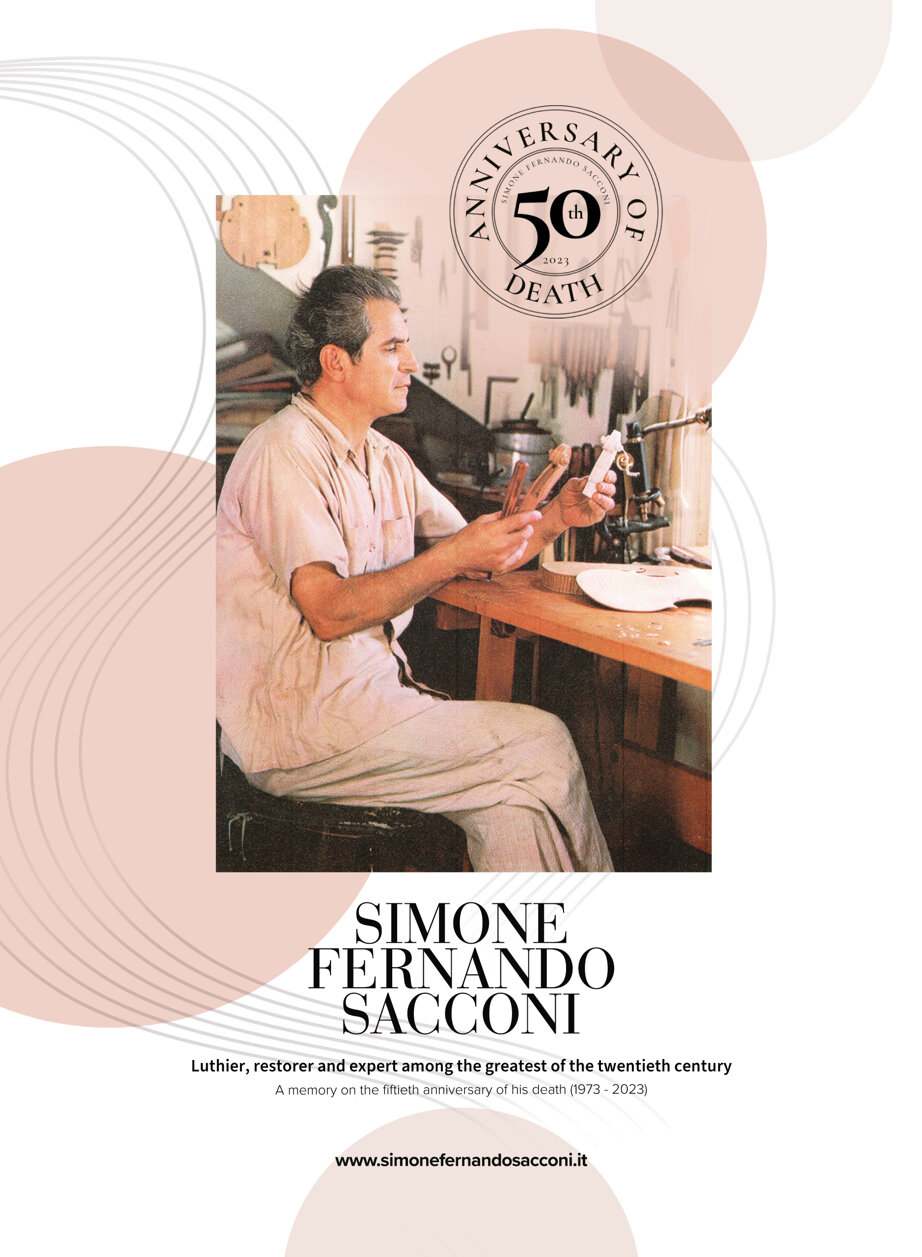

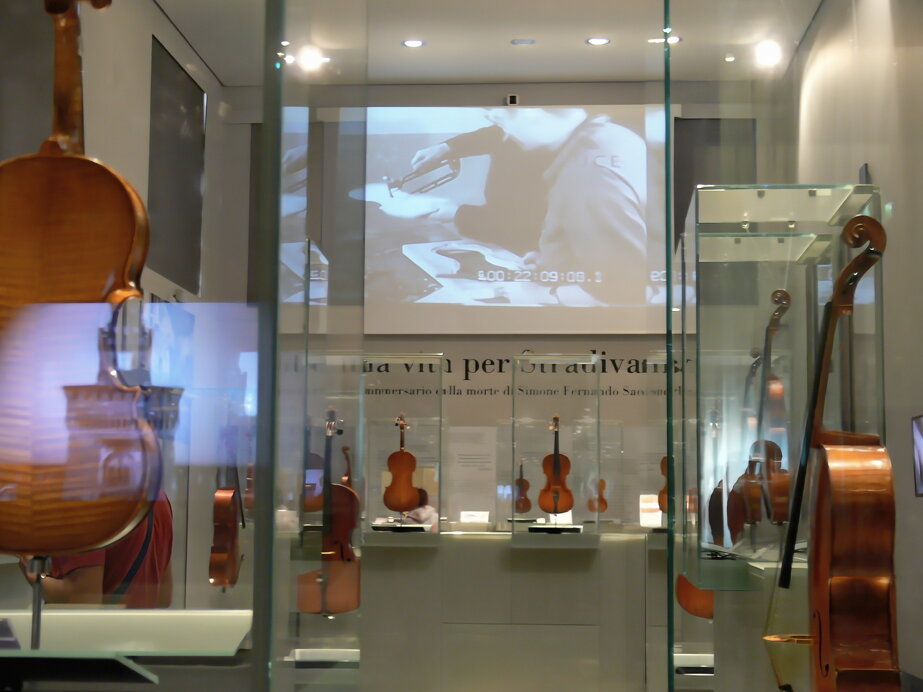
The Strad
Cremona Museo del Violino dedicates room to Simone Sacconi
London, 9 October 2023
The Museo del Violino in Cremona, Italy, has dedicated a room in the museum to luthier
Simone Fernando Sacconi.
The dedication was part of a series of events marking 50 years since the death of the influential
violin maker and scholar, who passed away on 26 June 1973 aged 78
The Strad
MASTER LUTHIER, SUPREME SCHOLAR
Special on Cremona and Simone Fernando Sacconi,
In the 50th anniversary of his death (1973-2023)
London, June 2023
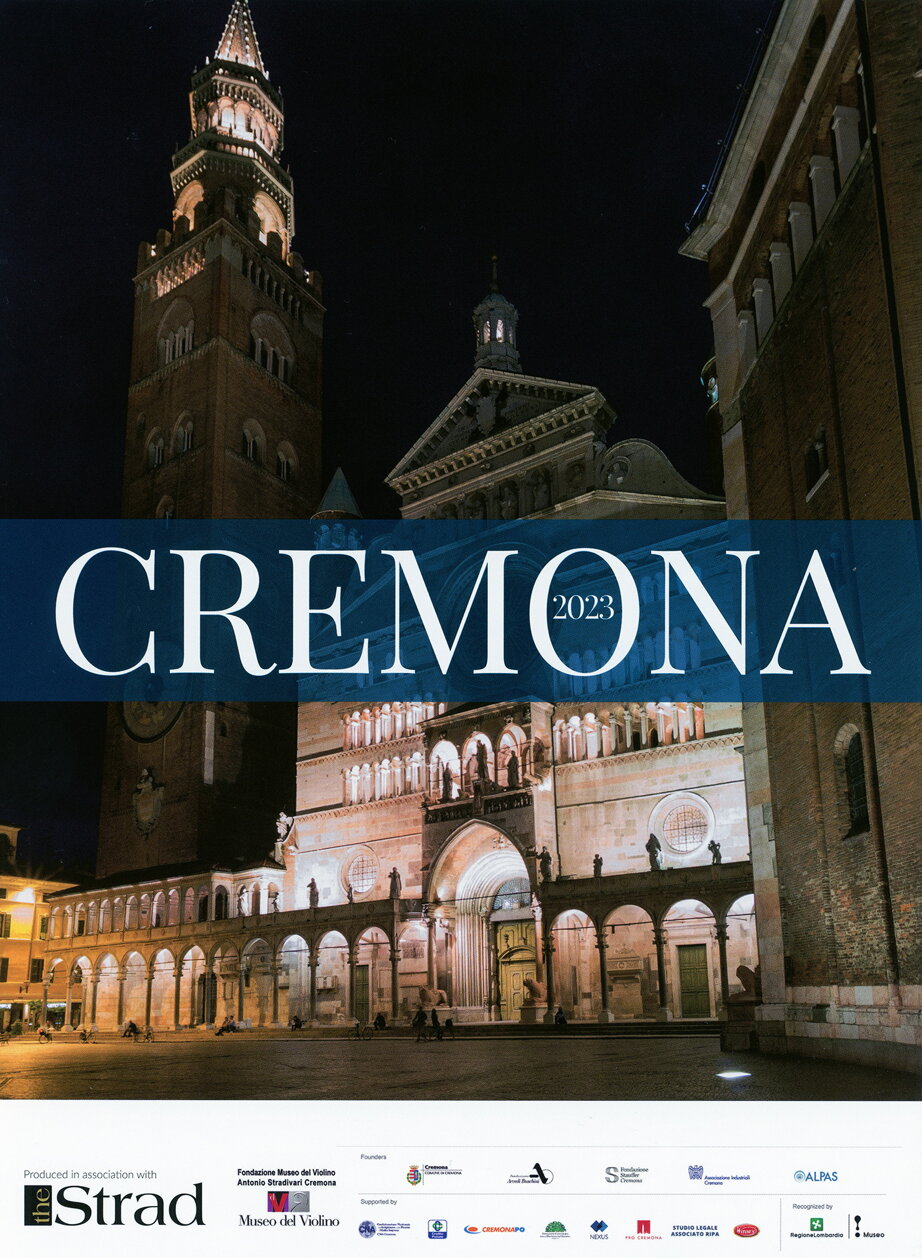
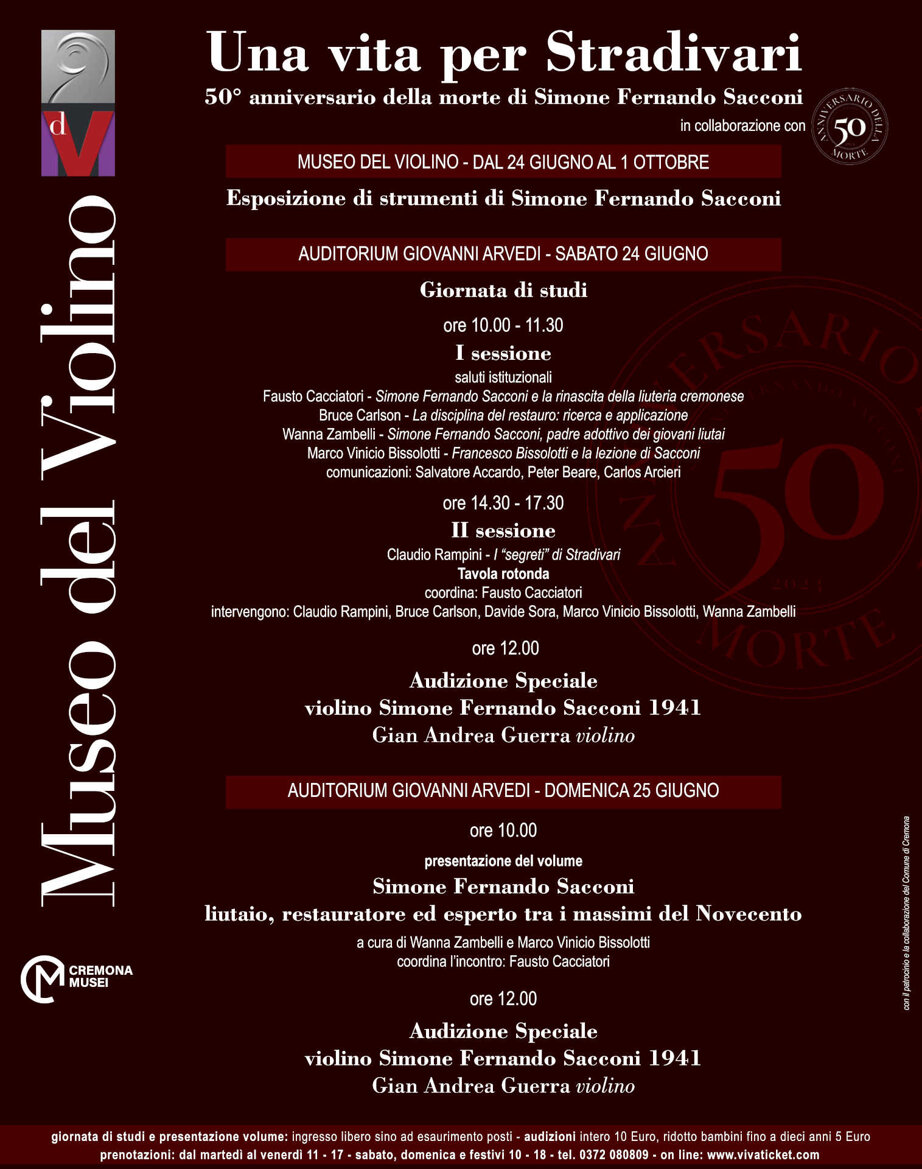
All the details
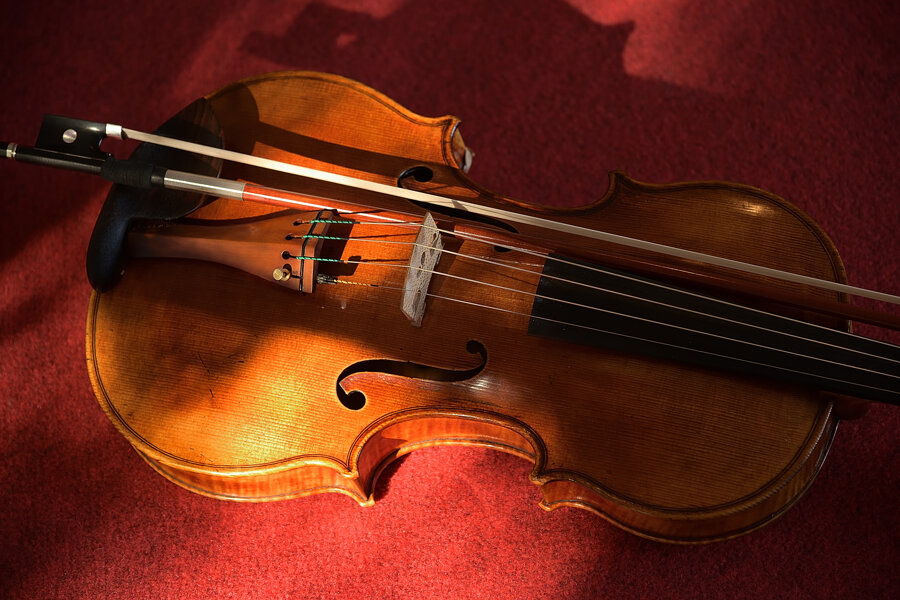
The 'secret' greatness of
Simone Fernando Sacconi
by Claudio Rampini
Simone Fernando Sacconi is impossible to define in a few words because the figure of this great violin-maker cannot be enclosed in a rigid category, given the vastness of his work and his thought, but I will still try to trace the essential lines to give an idea of who Sacconi was and his importance in the history of violin-making and music in general.
First, it is important to point out that among others, Sacconi had Giuseppe Fiorini as a teacher who introduced him to the "secrets" of Stradivari's work; in fact, it was Fiorini himself who managed after many difficulties, managed to acquire the entire collection of the original tools and forms from Stradivari's workshop. Therefore, Sacconi had the privilege of having first-hand information on the work of the great Stradivari, and not working on the basis of "hearsay," which unfortunately has characterised much of the history of Italian violin-making from the end of 1700 onwards.
It should be remembered that, that while rivers of ink have been spilled on the subject of classical Cremonese violin-making, we have had to take note that that golden age of our art saw its glory come to an end in the mid-1700s, due to changing political and social conditions. Basically, there were no heirs or scholars who could pass on the way of working of the ancient violin-makers of Cremona.
This irremediable fracture between the ancient and the modern worlds of violin-making has resulted in instruments that differ in construction method and thus, also in sound from the classical ones, which also contributed to the myth of Stradivari and his alleged "secrets".
Sacconi, who emigrated to the United States in 1931, first found employment at Hermann and then at Wurlitzer, two of the largest traders in ancient instruments then present on the world violin and musical scene, and it was here that Sacconi developed his masterly art of restoring original instruments.
Soon, Sacconi became the reference point for most of the most famous musicians in the world, because it is not enough to own a beautiful violin by Stradivari or Guarneri del Gesù to be guaranteed memorable concerts, a good instrument needs to be attended to constantly, a bit like a racing car and its mechanic, was there at all times to ensure that the instruments were always in the optimum condition to express their wonderful tone.
The lesson that Sacconi still teaches us today is that of continuity: in tradition, in building new instruments, in repairing and developing historical ones, in assisting musicians, in developing the culture and taste for music, in allowing the young generations of violin-makers and musicians to start off on the right foot, in keeping the spirit of research alive.
Without a guarantee of continuity to the violin-maker, there would be nothing left but mute pieces of meaningless wood on which to work.
At the end of the 1950s, Sacconi began his "pilgrimages" to Cremona, bringing with him his endless and precious wealth of knowledge, because Stradivari and the environment in which he had lived wanted to get to know him well, in the certainty that a purely abandoned art such as that of classical violin-making still leaves some trace behind it. And he was surprised to see that the original tools of Stradivari's workshop, donated to the city of Cremona by his master Giuseppe Fiorini, lying abandoned and gathering dust in a museum.
But the people of Cremona are not to blame, because the history of art is characterised by abandonment and rediscovery; just as the music of Bach and Vivaldi was rediscovered centuries after the disappearance of their composers, the original tools and forms of Stradivari's instruments also needed someone to rediscover them and understand their importance.
Sacconi was granted honourary citizenship by the Municipality of Cremona for his extraordinary violin-making and cultural merits; the Roman Sacconi, an adopted American and honoured citizen of Cremona, in fact can be considered a cosmopolitan, a man who has travelled from one culture to another without ever being affected by them and who was always able to capture their best side.
Together with his beloved students, Francesco Bissolotti and Wanna Zambelli, Sacconi lived in Cremona for one of the most creative periods of his life, and it is no coincidence that thanks to him, the legendary violin by Antonio Stradivari, now known as the "Cremonese 1715", was the first classical instrument to return to the city after more than 200 years of absence. A city that regains its memory.
Sacconi's spiritual testament is his book "I 'segreti' di Stradivari (The 'Secrets' of Stradivari)", a work in which he transferred the immense wealth of his knowledge, still considered a reference text today for anyone interested in instruments, music and violin-making, which provides infinite research ideas and in fact marked the boundary between violin-making based on "hearsay" and that of having seen and touched.
The 50th anniversary of Sacconi's death, which will fall next year in 2023, is not only an opportunity to remember this great violin-maker, but also to talk about and discuss his book, his teachings and his methods. Not only that, we will also have the opportunity to listen to some of Sacconi's wonderful instruments through the great mastery of the English «Sacconi Quartet» ensemble which, on 25 June 2023, will be the main act of a highly anticipated concert in the splendid «Giovanni Arvedi» Auditorium of the Violin Museum of Cremona. Sacconi himself will return to speak to us through his instruments, offering us a unique opportunity for artistic growth.
In the photo above: Tenor Viola by Simone Fernando Sacconi, New York 1934
Text and photo by © Claudio Rampini, 21 July 2022
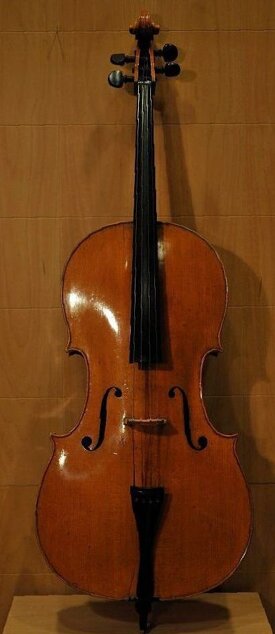
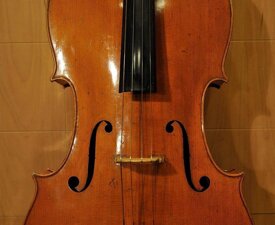

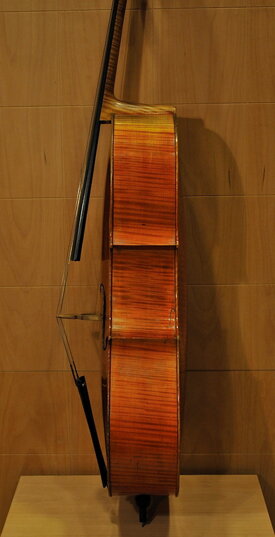
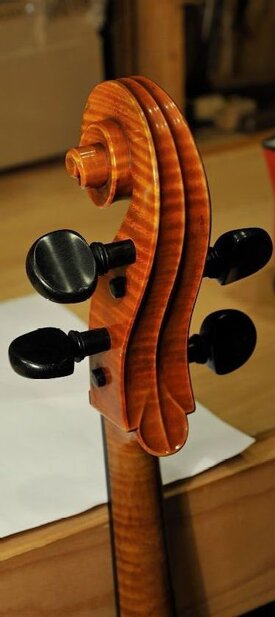
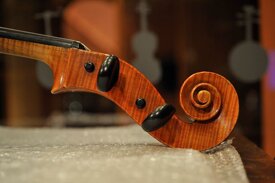


Simone Fernando
Sacconi
Cello built by the Maestro
(Roma, 1927)
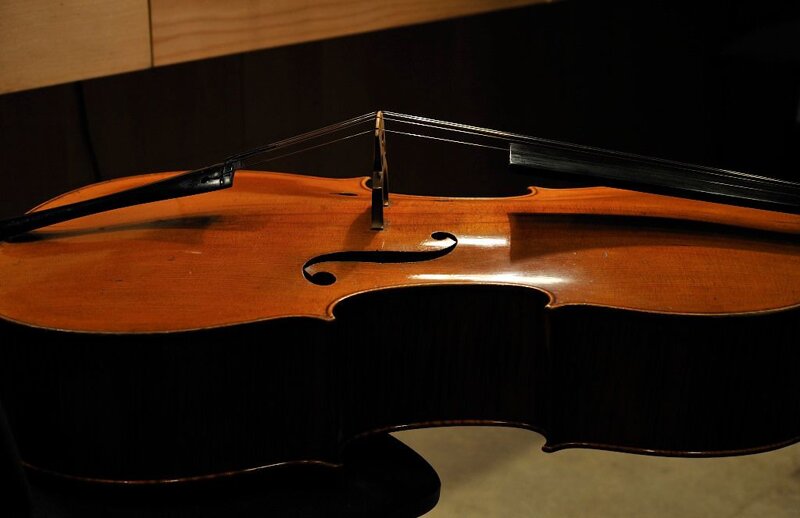
Images published courtesy of the Museum
© Photos Claudio Rampini
«Sacconi Quartet»
in concert
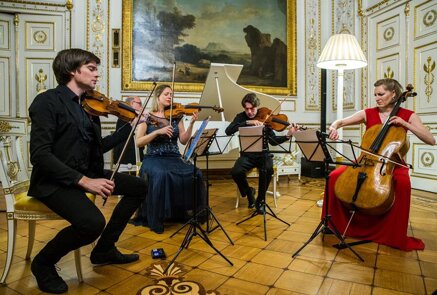
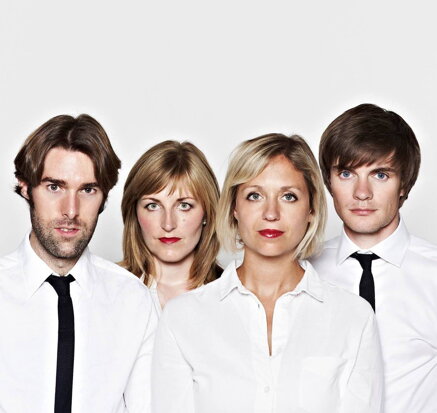

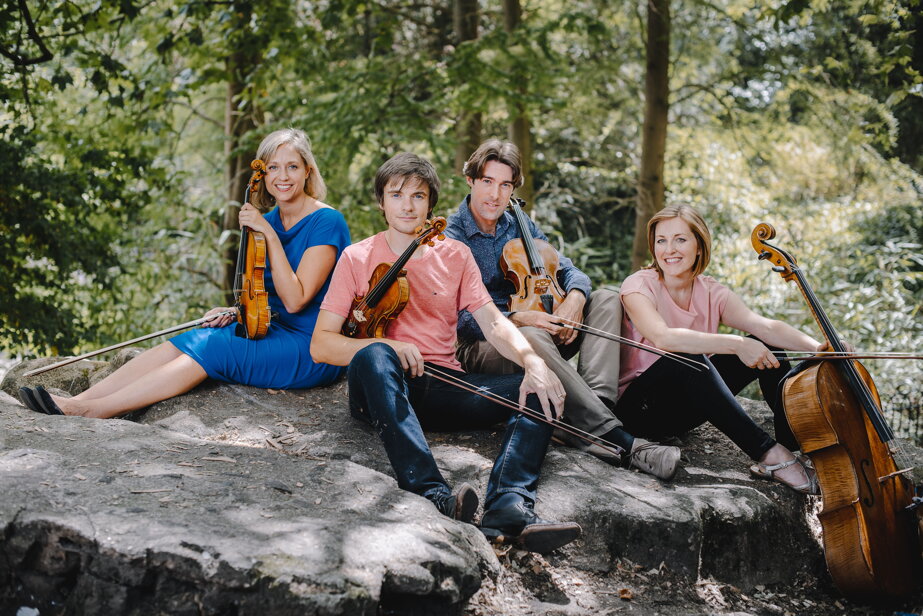
Sacconi Quartet
Simone Fernando Sacconi
The name Sacconi Quartet comes from the outstanding twentieth-century Italian luthier and restorer Simone Fernando Sacconi, whose book The "Secrets" of Stradivari is considered an indispensable reference for violin makers.
Sacconi Quartet's instruments
Ben Hancox plays a 1932 Sacconi violin and Robin Ashwell a 1934 Sacconi viola, both made in New York. Hannah Dawson plays a 1927 Sacconi violin made in Rome, and Cara Berridge plays a Nicolaus Gagliano cello from 1781. Ben, Hannah & Cara have all been generously loaned these instruments by the Royal Society of Musicians, Britain’s oldest music charity helping musicians in need, for which they are extremely grateful. Robin is indebted to Ellen Solomon for the use of his viola.
Testimonies
on the Maestro Sacconi
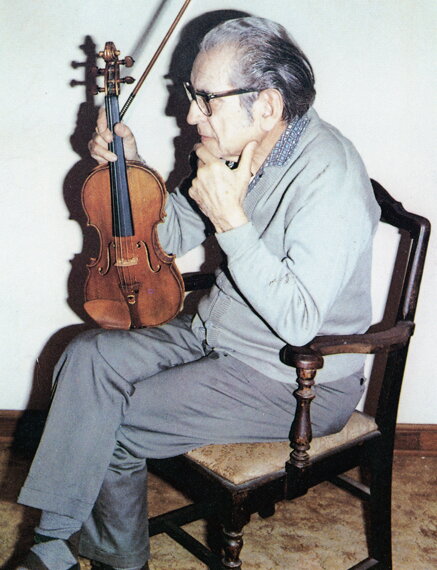
Simone Fernando Sacconi
in his wife’s story
Teresita Pacini
Point Lookout, Long Island, February 29, 1984
From the book:
«From Violinmaking to Music:
The Life and Works of Simone Fernando Sacconi»
In the image:
Simone Fernando Sacconi
Charles Beare
Violinmaker, restorer and expert
London, July 4, 1985

Charles Beare
and the Maestro Sacconi
Introduction to the book:
«From Violinmaking to Music:
The Life and Works of Simone Fernando Sacconi»
In the image:
The cover of the book
(English version)
Link: Charles Beare
Francesco Bissolotti
Violinmaker
Cremona, June 26, 1985
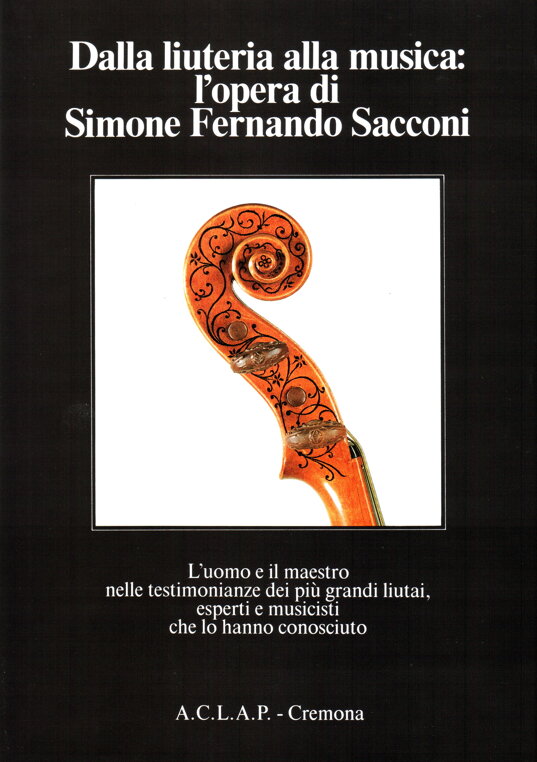
Francesco Bissolotti
and the Maestro Sacconi
From the book:
«From Violinmaking to Music:
The Life and Works of Simone Fernando Sacconi»
In the image:
The cover of the book
(Italian version)
Link: Francesco Bissolotti
Lee Wurlitzer
Former President, Rembert Wurlitzer, Inc.
New York, April 29, 1985
Lee Wurlitzer
and the Maestro Sacconi
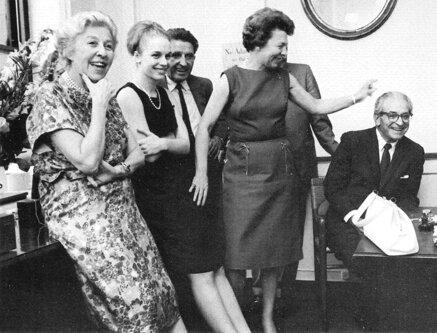
From the book: «From Violinmaking to Music: The Life and Works of Simone Fernando Sacconi»
In the images (from above):
√ On the right, Maestro Sacconi with Mrs Lee Wurlitzer (center) and daughter Marianne (second from left).
Mrs Wurlitzer became President of the Rembert Wurlitzer firm of luthiers and traders in ancient instruments after the death of her husband Rembert, who had founded the company in New York in 1949. The collaboration between Rembert Wurlitzer and Fernando Sacconi had brought the company to world fame and had made it the meeting point of the most famous musicians in the field of string instruments. As President, Mrs Wurlitzer has distinguished herself by concluding the greatest transaction ever made, that of the precious violins of the Hottinger Collection.
√ Rembert Wurlitzer, Founder and President of the prestigious New York Violin House, in which Sacconi worked for over twenty years. After the Maestro’s death, the company ceased its activity.
√ At R. Wurlitzer, Inc. to 120 West 42nd Street in New York.
In the foreground (from left): Simone Fernando Sacconi, Rembert Wurlitzer and Dario D'Attili.
In the background (from left): René A. Morel, Mario D'Alessandro, John Roskoski, Tommy Bertucca, William Salchow, Hans J. Nebel and Frank Passa.
Link: Rembert Wurlitzer Co.
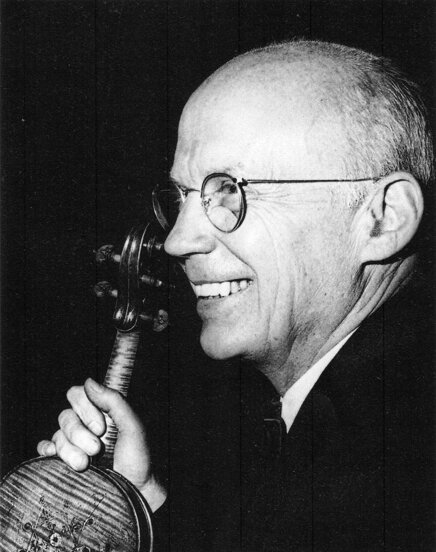
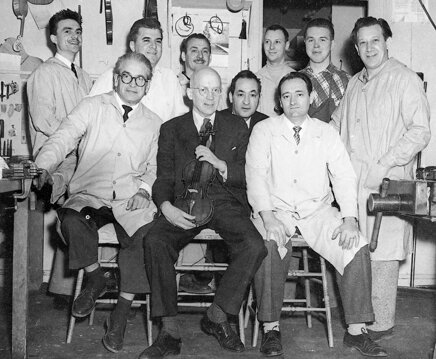
Marianne Wurlitzer
Former Vice-President, Rembert Wurlitzer, Inc.
New York, July 11, 1985
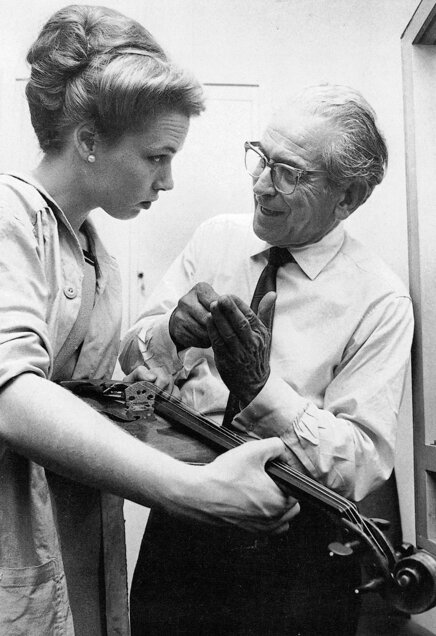
Marianne Wurlitzer
and the Maestro Sacconi
From the book:
«From Violinmaking to Music:
The Life and Works of Simone Fernando Sacconi»
The Maestro Sacconi with Marianne Wurlitzer, daughter of Rembert and Lee Wurlitzer.
In the image:
Link: Rembert Wurlitzer Co.
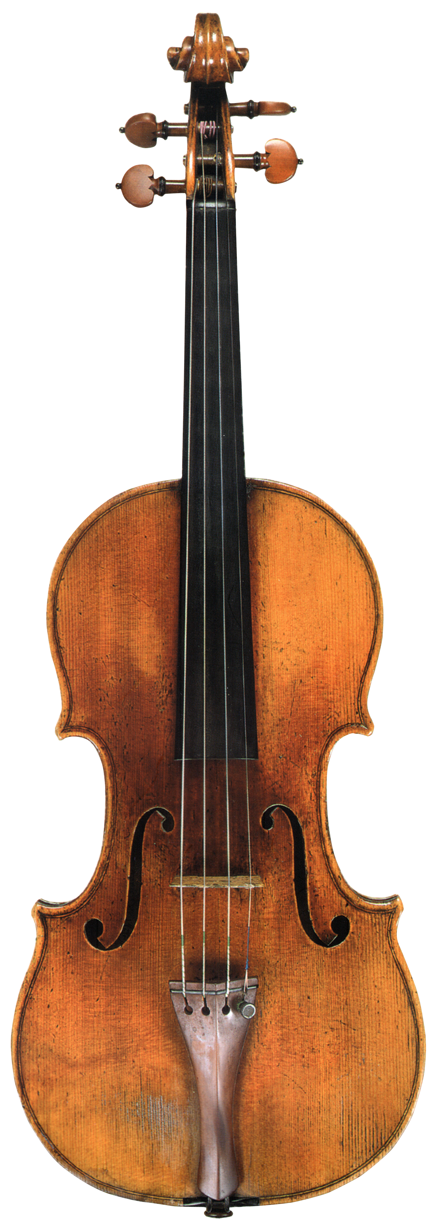
Violin by
Antonio Stradivari
«Cremonese» 1715
ex Joachim
The Maestro Sacconi adored the great violin maker. He dedicated a lifetime of studies and research to Stradivari, whose results he documented in detail in the book «I 'Segreti' di Stradivari».
«I 'segreti' di Stradivari» was Fernando Sacconi's final gift to his profession, a detailed account of how Stradivari made his unique instruments, and it has become almost a bible. The method described in it is, I believe, certainly Stradivari's and almost certainly the best, but Sacconi would have been upset at those who follow it blindly and assume that their result will inevitably be good. He achieved what he did and became the great person that he was by questioning everything, following his own instincts and making up his own mind, and always looking for a better way of doing things, and a better result. Antonio Stradivari himself can hardly have been very different.
[Charles Beare. London, July 4, 1985]
The famous instrument is kept in the prestigious «Museo del Violino» of Cremona, in Italy, visited by thousands of people every year, and is played in concerts and performances of international violinists in the Auditorium «Giovanni Arvedi» of the same Museum, concert hall of superb beauty and whose perfect acoustics is praised all over the world.
Link: Museo del Violino
The Maestro Sacconi
in the testimonies of some of the greatest Musicians
who knew him
(in alphabetical order)
Salvatore Accardo
Violinist
Cremona, October 7, 1983

Salvatore Accardo
and the Maestro Sacconi
From the book:
«From Violinmaking to Music:
The Life and Works of Simone Fernando Sacconi»
In the image:
The violinist Salvatore Accardo
Amedeo Baldovino
Cellist
Florence, June 21, 1985
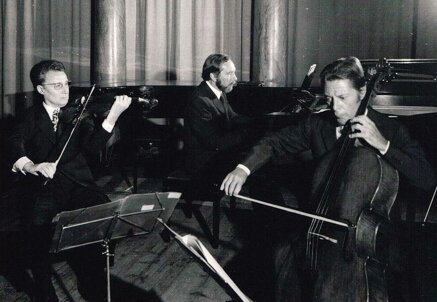
Amedeo Baldovino
and the Maestro Sacconi
From the book: «From Violinmaking to Music: The Life and Works of Simone Fernando Sacconi»
From left in the image: The violinist Renato Zanettovich,
the pianist Dario De Rosa and the cellist Amedeo Baldovino.
Link: Trio di Trieste
Pina Carmirelli
Violinist
Rome, June 11, 1985
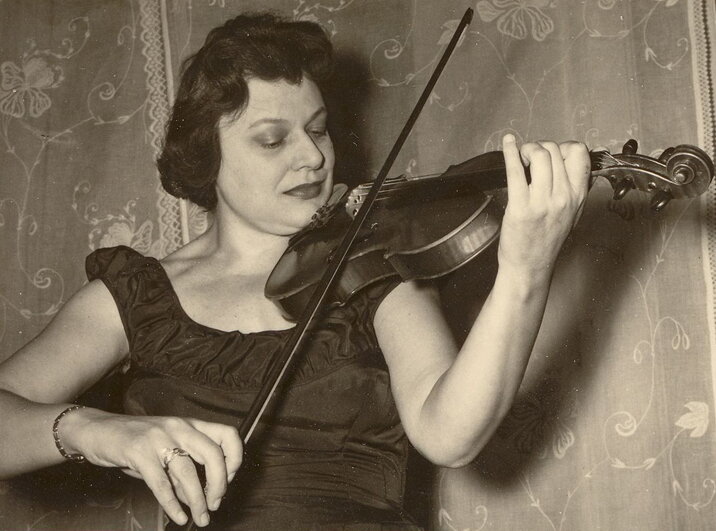
Pina Carmirelli
and the Maestro Sacconi
From the book:
«From Violinmaking to Music: The Life and
Works of Simone Fernando Sacconi»
In the image:
The violinist Pina Carmirelli
Link: Pina Carmirelli
Pablo Casals
Cellist
Molitg-les-Bains (Pyr. Or.), France, June 7, 1958
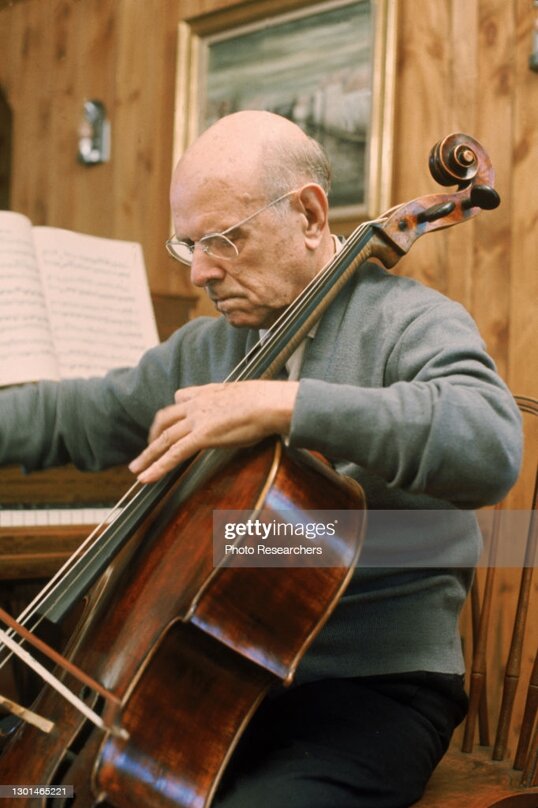
Pablo Casals
and the Maestro Sacconi
In the image:
The cellist Pablo Casals
Image: Photo Researchers by Getty Images
Link: Pablo Casals
From the book:
«From Violinmaking to Music:
The Life and Works of Simone Fernando Sacconi»
Rocco Filippini
Cellist
Lugano, October 23, 1983
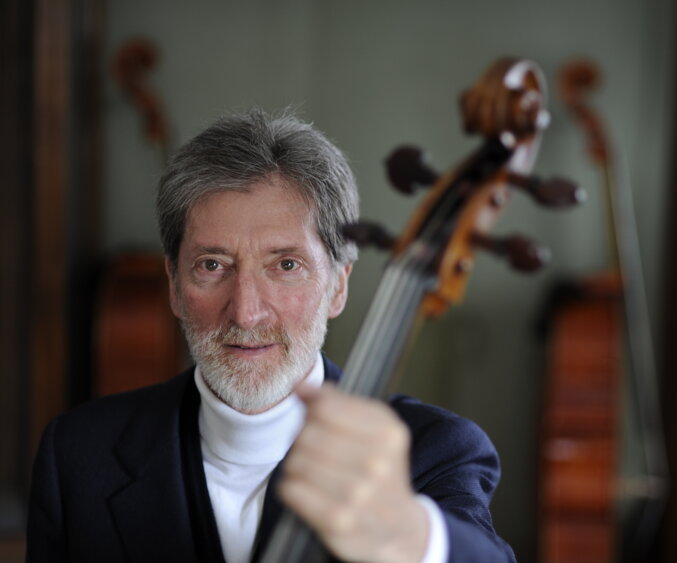
Rocco Filippini
and the Maestro Sacconi
From the book:
«From Violinmaking to Music: The Life and
Works of Simone Fernando Sacconi»
In the image:
The cellist Rocco Filippini
©Cosimo Filippini 2009
Link: Rocco Filippini
Pierre Fournier
Cellist
Thessaloniki, Greece, January 21, 1984
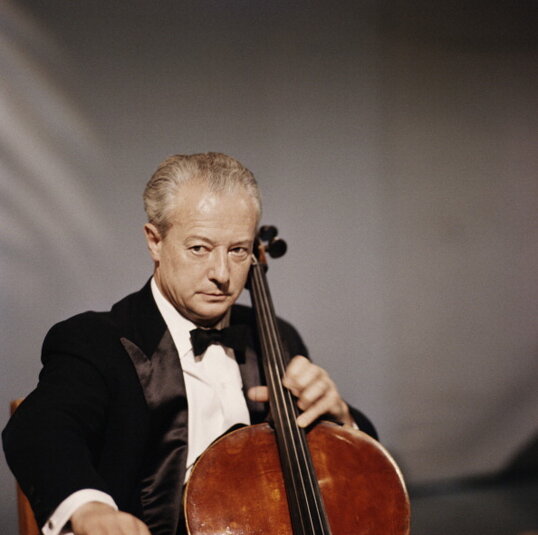
Pierre Fournier
and the Maestro Sacconi
In the image:
The cellist Pierre Fournier
Getty Images
Link: Pierre Fournier
From the book:
«From Violinmaking to Music:
The Life and Works of Simone Fernando Sacconi»
Zino Francescatti
Violinist
La Ciotat, June 20, 1985
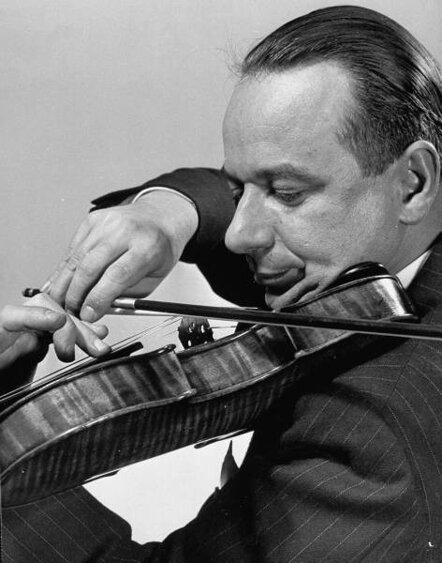
Zino Francescatti
and the Maestro Sacconi
From the book:
«From Violinmaking to Music: The Life and
Works of Simone Fernando Sacconi»
From left in the image:
The Maestro Sacconi
and the violinist Zino Francescatti
Link: Zino Francescatti
Joseph Fuchs
Violinist
New York, March 4, 1984
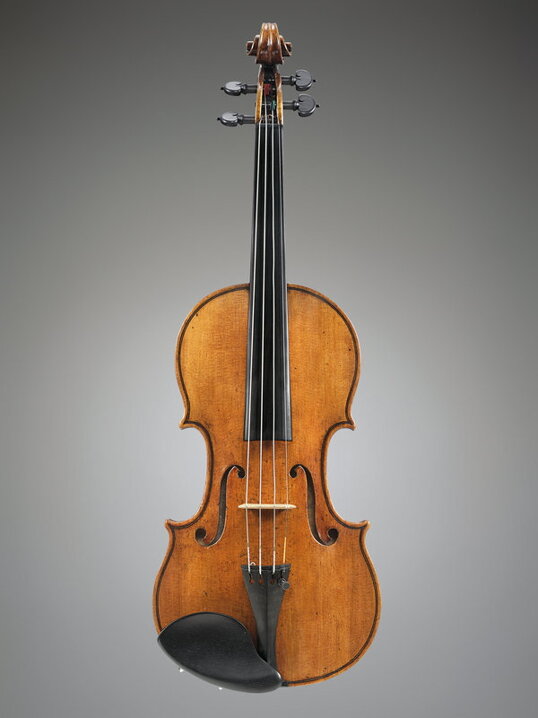
Joseph Fuchs
and the Maestro Sacconi
From the book:
«From Violinmaking to Music:
The Life and Works of Simone Fernando Sacconi»
In the image: Violin by Antonio Stradivari
«The Penny». Cremona, around the year 1770.
Link: Joseph Fuchs
Christie's Images / Artothek / Archivi Alinari.
Carlo Maria Giulini
Violist and Conductor
Milan, June 19, 1985
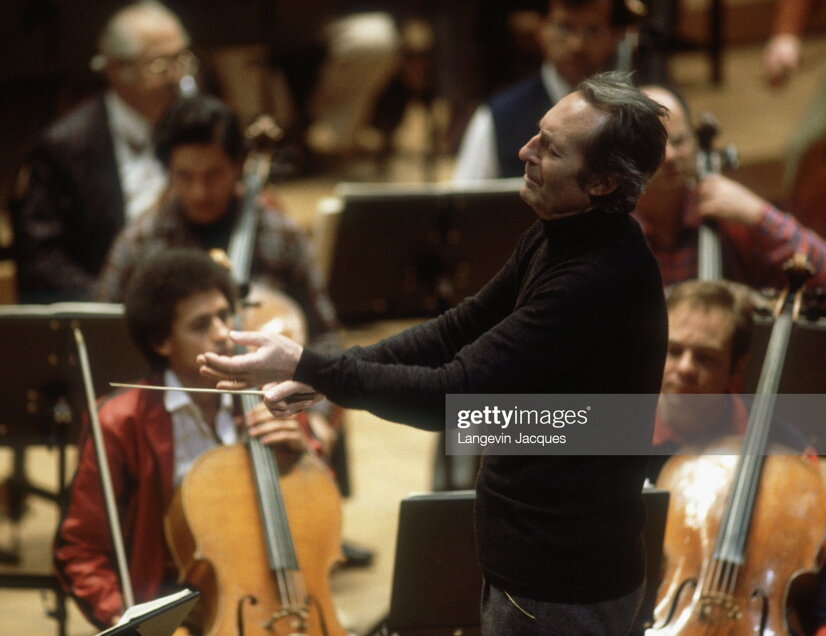
Carlo Maria Giulini
and the Maestro Sacconi
From the book:
«From Violinmaking to Music:
The Life and Works of Simone Fernando Sacconi»
In the image:
Carlo Maria Giulini and the World Philarmonic Orchestra
(Photo by Jacques Langevin / Sygma via Getty Images)
Link: Carlo Maria Giulini
Franco Gulli
Violinist
Bloomington, Indiana, July 5, 1983
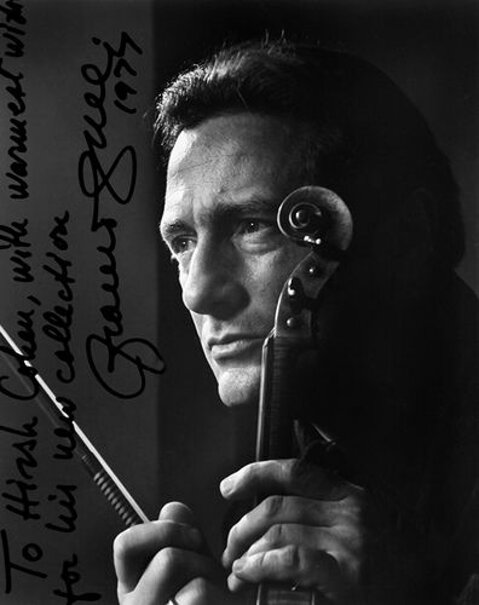
Franco Gulli
and the Maestro Sacconi
From the book:
«From Violinmaking to Music:
The Life and Works of Simone Fernando Sacconi»
In the image:
The violinist Franco Gulli
pixnet.net
Link: Franco Gulli
Yehudi Menuhin
Violinist
London, January 19, 1984
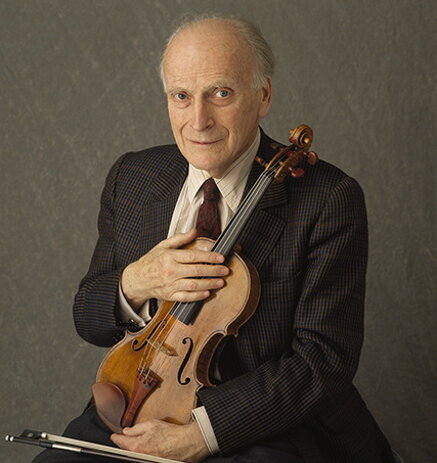
Yehudi Menuhin
and the Maestro Sacconi
From the book:
«From Violinmaking to Music:
The Life and Works of Simone Fernando Sacconi»
In the image:
The violinist Yehudi Menuhin
Getty Images
Link: Yehudi Menuhin
Ruggiero Ricci
Violinist
Harrogate, Great Britain, August 7, 1985

Ruggiero Ricci
and the Maestro Sacconi
From the book:
«From Violinmaking to Music:
The Life and Works of Simone Fernando Sacconi»
In the image:
The violinist Ruggiero Ricci
plays April 25, 1977 in New York.
(Photo by Santi Visalli/Getty Images).
Link: Ruggiero Ricci
Leonard Rose
Cellist
New York, January 19, 1984
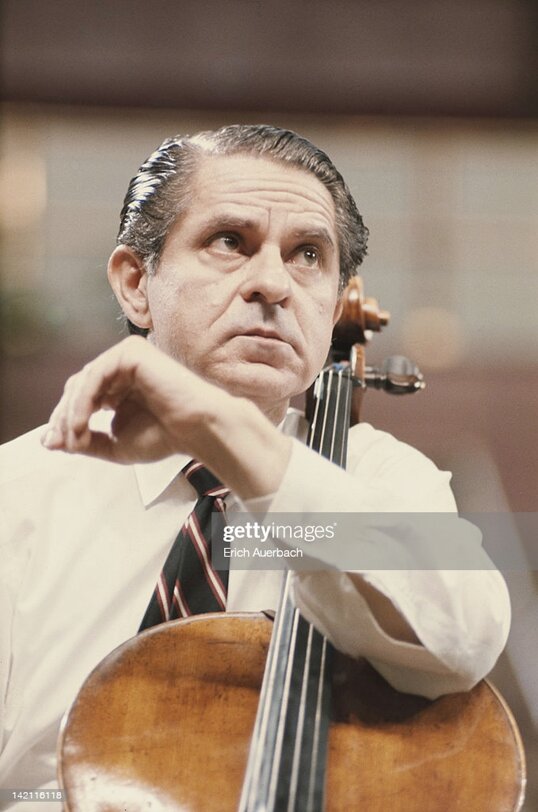
Leonard Rose
and the Maestro Sacconi
From the book:
«From Violinmaking to Music:
The Life and Works of Simone Fernando Sacconi»
In the image:
The cellist Leonard Rose.
Photo by Erich Auerbach / Getty Images.
Link: Leonard Rose
Alexander Schneider
Violinist
New York, January 26, 1984

Alexander Schneider
and the Maestro Sacconi
From the book:
«From Violinmaking to Music:
The Life and Works of Simone Fernando Sacconi»
In the images (from above):
√ The violinist Alexander Schneider, signed by autograph.
From letravivalivros.com.br
√ From the left in the photo:
The violinist Alexander Schneider, the cellist Pablo Casals and
the Maestro Sacconi.
Link: Alexander Schneider
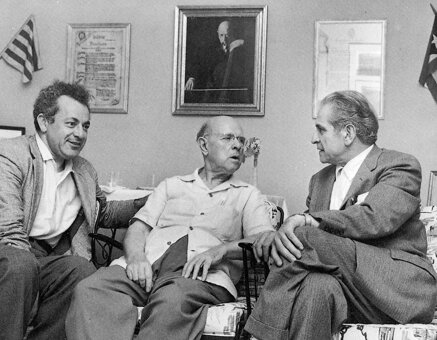
Isaac Stern
Violinist
New York, February 19, 1984
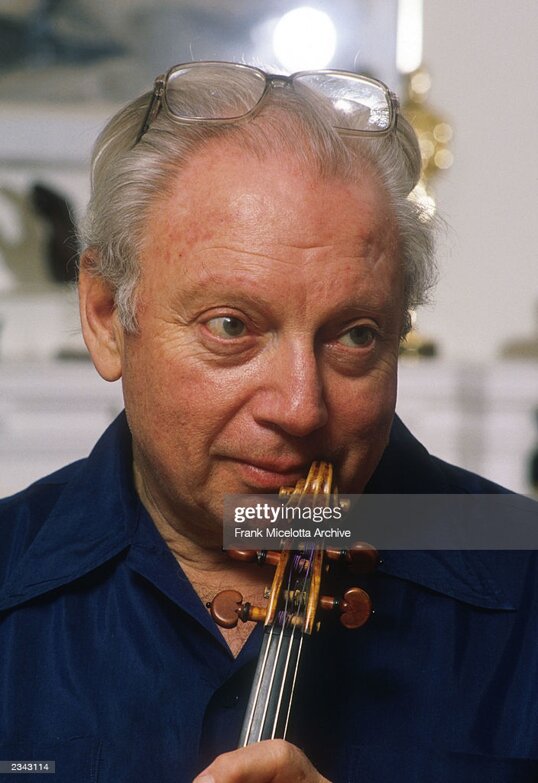
Isaac Stern
and the Maestro Sacconi
From the book:
«From Violinmaking to Music:
The Life and Works of Simone Fernando Sacconi»
In the image:
The violinist Isaac Stern.
Getty Images Frank Micelotta Archive
Link: Isaac Stern
Henryk Szeryng
Violinist
Principato di Monaco, June 24, 1985
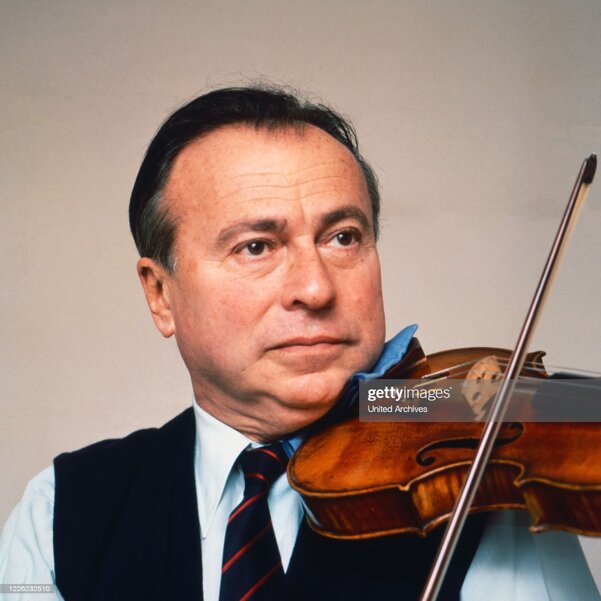
Henryk Szeryng
and the Maestro Sacconi
and the Maestro Sacconi
From the book:
«From Violinmaking to Music:
The Life and Works of Simone Fernando Sacconi»
In the image:
The violinist Henryk Szeryng
Image by Getty Images
Link: Henryk Szeryng
Uto Ughi
Violinist
Venice, February 17, 1985
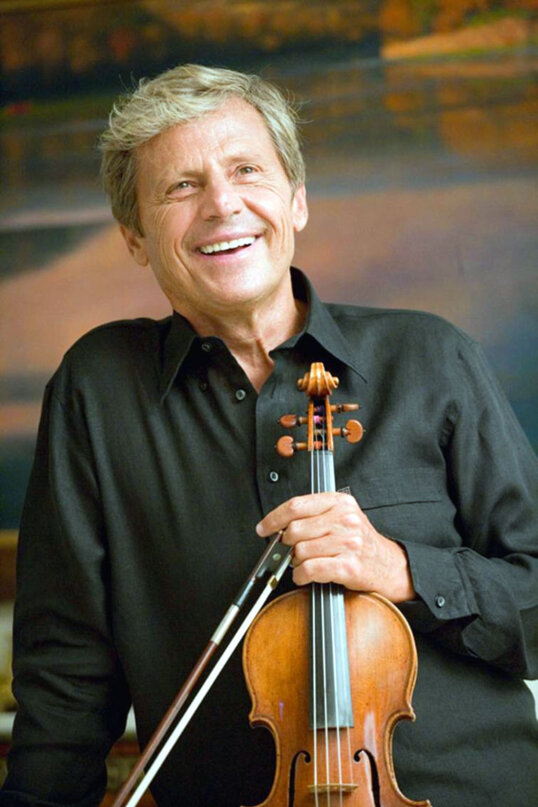
Uto Ughi
and the Maestro Sacconi
From the book:
«From Violinmaking to Music:
The Life and Works of Simone Fernando Sacconi»
In the image:
The violinist Uto Ughi
biografieonline.it
Link: Uto Ughi
Renato Zanettovich
Violinist
Trieste, June 7, 1985
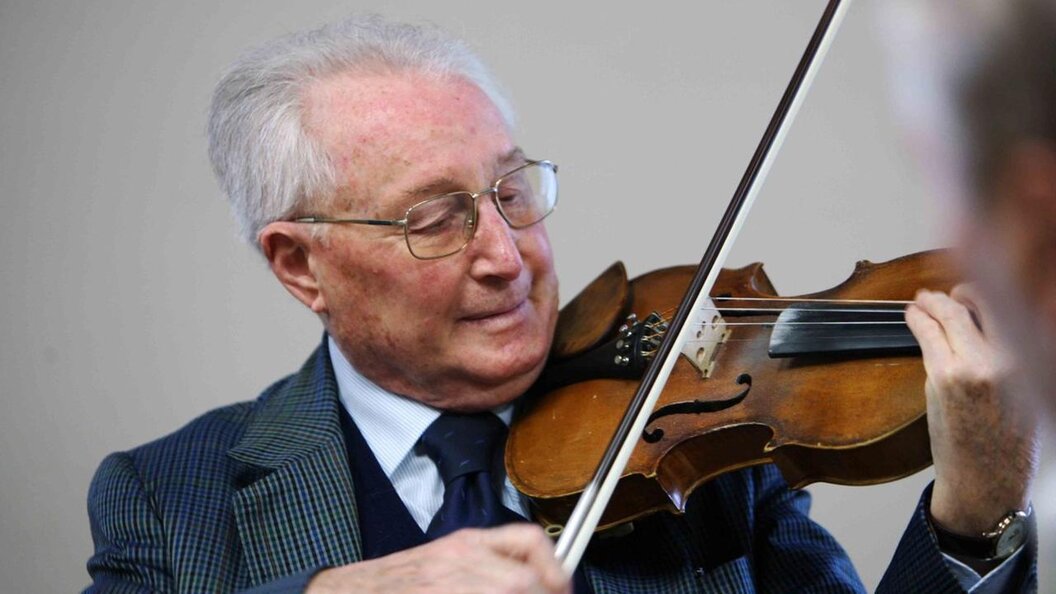
Renato Zanettovich
and the Maestro Sacconi
From the book:
«From Violinmaking to Music:
The Life and Works of Simone Fernando Sacconi»
In the image:
The violinist Renato Zanettovich
Image: Marco Zanettovich
Link: Renato Zanettovich
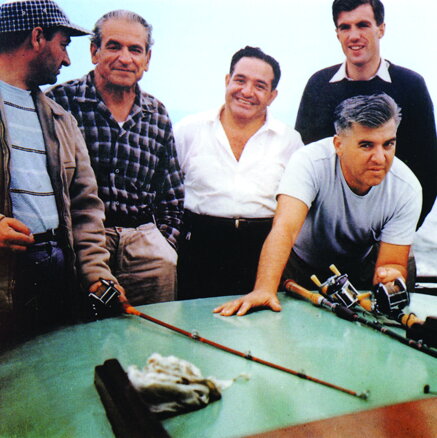
Simone Fernando Sacconi
fishing with some colleagues on the Atlantic Ocean in Long Island Bay
In the photo, from the left:
Dario D'Attili, Fernando Sacconi, Vahakn Nigogosian, Charles Beare, Hans J. Nebel e René A. Morel.
In the center, in the foreground: Mario D'Alessandro.
Long Island, in the state of New York, is an island on the east coast of the United States, located opposite the states of New York and Connecticut. It is 190 km long and has a maximum width of 37 km. It is separated from the mainland by the Long Island Sound, a 145 km long and 5 to 32 km wide stretch of sea. Istock image.
Link: Long Island Sound
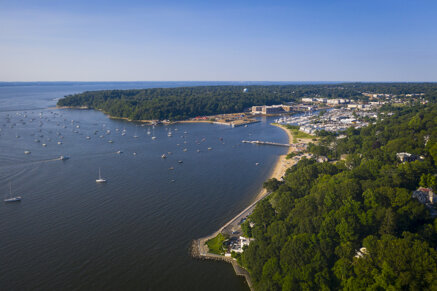
The Maestro Sacconi in the testimonies of some of his most
prestigious students and colleagues
(in alphabetical order, on PC and tablet)


CARLOS ARCIERI
CHARLES BEARE
New York, February 28, 1984
London, July 4, 1985


LUIZ BELLINI
MARIO D'ALESSANDRO
New York, March 2, 1984
Nutley, New Jersey, July 18, 1985


DARIO D'ATTILI
JACQUES FRANÇAIS
Dumont, New Jersey, March 6, 1984
New York, March 29, 1984


BERNARD MILLANT
MAX MÖLLER
Paris, August 29, 1983
Huizen, July 10, 1983


RENÉ A. MOREL
HANS J. NEBEL
New York, August 31, 1983
Harrington Park, September 19, 1983


VAHAKN NIGOGOSIAN
FRANK PASSA
New York, March 1, 1984
San Francisco, March 10, 1984


JOHN A. ROSKOSKI
WILLIAM SALCHOW
New York, July 9, 1985
New York, June 10, 1985


PIERRE VIDOUDEZ
WILLIAM H. WEBSTER
Geneva, July 1, 1985
Old Tappan, New Jersey, June 16, 1985


HANS WEISSHAAR
ANTHONY WRONA
Los Angeles, March 21, 1984
Buffalo, May 1, 1984
David Segal
Violinmaker and restorer
New York, March 3, 1984
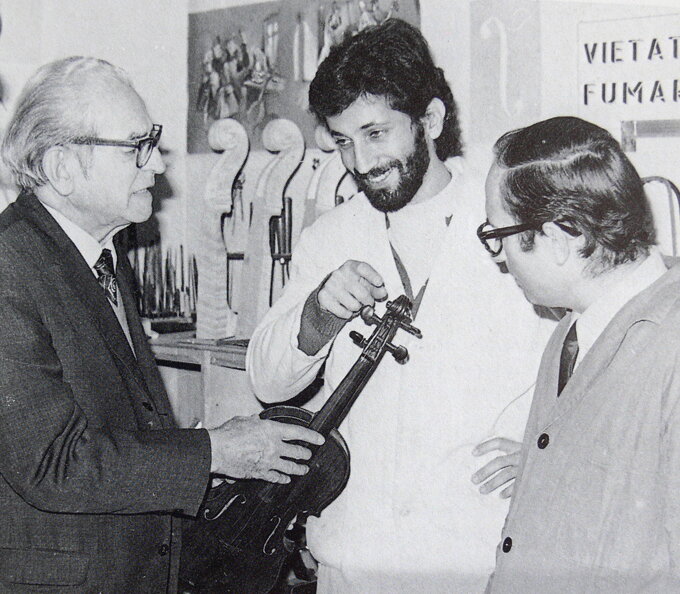
David Segal
and the Maestro Sacconi
From the book:
«From Violinmaking to Music:
The Life and Works of Simone Fernando Sacconi»
From the left in the image:
The Maestro Sacconi,
David Segal and Francesco Bissolotti
Link: David Segal Violins
Andrea Mosconi
Curator of the Violins of the Town Hall of Cremona
Cremona, July 28, 1985

Andrea Mosconi
and the Maestro Sacconi
From the book:
«From Violinmaking to Music:
The Life and Works of Simone Fernando Sacconi»
From the left in the image:
The Maestro Sacconi and the professor Andrea Mosconi
Link: Mosconi Andrea
Wanna Zambelli
Violin maker and teacher at the Cremona International Violin Making School
Cremona, June 29, 1985

Wanna Zambelli
and the Maestro Sacconi
From the book:
«From Violinmaking to Music:
The Life and Works of Simone Fernando Sacconi»
In the image:
The violin maker Wanna Zambelli
Cremona, 1983
Link: Wanna Zambelli
Sacconi´s House at Point Lookout, Long Island, New York today

The original house was a little different, but I am moved to see the place where the great Maestro lived and had his private workshop for many years, until his death on 26 June 1973.
Photo: contributed by Michael Köberling on 8 January 2023.

List of testimonies
on the Maestro Sacconi
Collected in the book:
«From Violinmaking to Music:
The Life and Works of Simone Fernando Sacconi»
Sections:
Introduction
Violinmakers, restorers and experts / Musicians / Collectors, scholars and amateurs / Imprint and Acknowledgements
The images are taken from the book «From Violinmaking to Music: The Life and Works of Simone Fernando Sacconi», unless otherwise indicated
Link
In memory of Simone Fernando Sacconi
in the 50th anniversary of his death
www.simonefernandosacconi.it
Simone Sacconi (pointhistorical.org)
Cremona - Museo del Violino
Simone Fernando Sacconi
Cremona
Washington, D.C.
Library of Congress
The STRAD
Cremona 2023
London, June 2023
The STRAD
Cremona Museo del Violino dedicates room to Simone Sacconi
Corriere della Sera
«Italians»
di Beppe Severgnini
50° Anniversario della morte del liutaio italo-americano Sacconi (corriere.it)
Firenze
© 2023 - In memory of Simone Fernando Sacconi in the 50th Anniversary of his death
